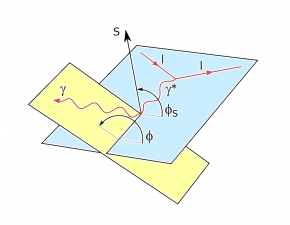The location of the new American EIC collider has been chosen
16-01-2020
In early January, the US Department of Energy announced the location of a new powerful high energy physics research device. The Electron-Ion collider (EIC) is to be built in Brookhaven National Laboratory (NY) at a cost of approx. 2 billion. dollars. Two opposing accelerators will collide electrons with protons or atomic ions, with the possibility of polarization of both beams. The research program of planned experiments is co-created by scientists from the NCBJ.
„The new device will allow a better understanding of the structure of the smallest building blocks of matter and the interactions that make it exist,” explains Professor Lech Szymanowski from the National Centre for Nuclear Research (NCBJ). „Physicists around the world are preparing an EIC research program and are working on optimizing accelerator design and experiments using their beams. „
Among the researchers preparing new experiments is a Polish group of theoretical physicists from the NCBJ Department of Fundamental Research. Doctors Paweł Sznajder and Jakub Wagner together with colleagues from the French CEA have prepared the PARTONS computing platform that allows generating predictions for EIC based on existing theoretical knowledge about strong interactions. „The results obtained thanks to this platform and thanks to computational techniques such as neural networks and genetic algorithm allow to create precise predictions for EIC, but also to assess its expected impact on understanding the structure of matter” – describes Dr Sznajder. „The unusual precision of the planned experiments will allow to create three-dimensional, tomographic images of the interior of the proton for the first time. „”The tool we have prepared is unique,” adds Dr Wagner. „We have already obtained and published several papers with the first results that should facilitate theoretical analysis. data obtained in the EIC. „
„Nuclear matter is still not exactly known, and we can describe its interactions only approximately,” says Dr Tolga Altinoluk, who implements the European Union grant at NCBJ for heavy ion physics at EIC. „Collisions with the use of heavy ions enable the study of new states of matter with unprecedented density of gluons – particles carrying strong interactions, responsible for the existence of, among others, a proton. „
Theoretical studies of strong interactions at the most elementary level have a long-standing tradition at NCBJ, and our scientists are among the world experts in this field. In 2021, the institute and the University of Warsaw will organize an international meeting of physicists working on EICs, hosting several hundred of the most outstanding specialists from around the world.
You can read more about the EIC project in the information on the BNL website: https://www.bnl.gov/newsroom/news.php?a=116998





